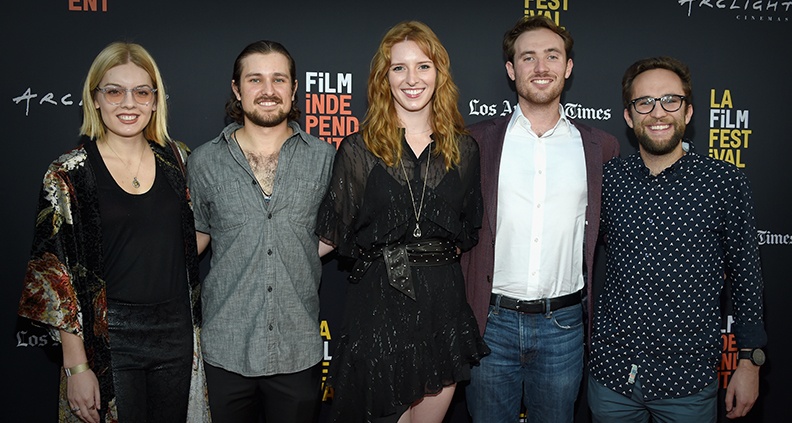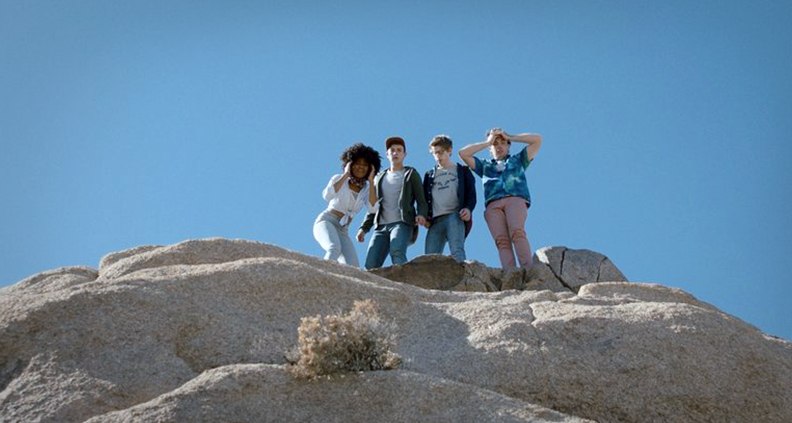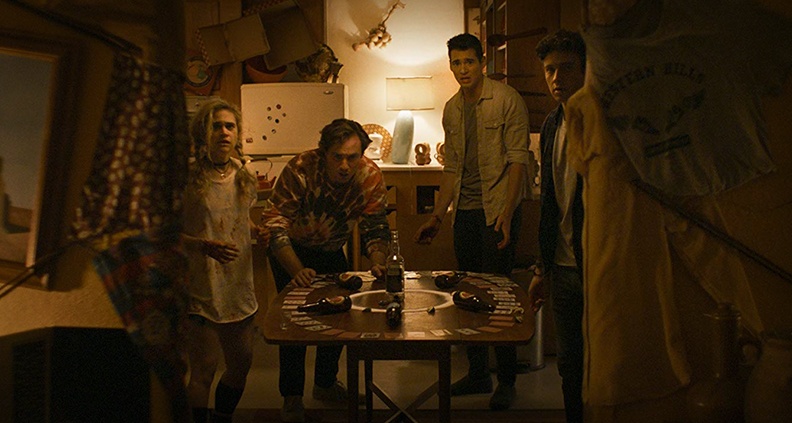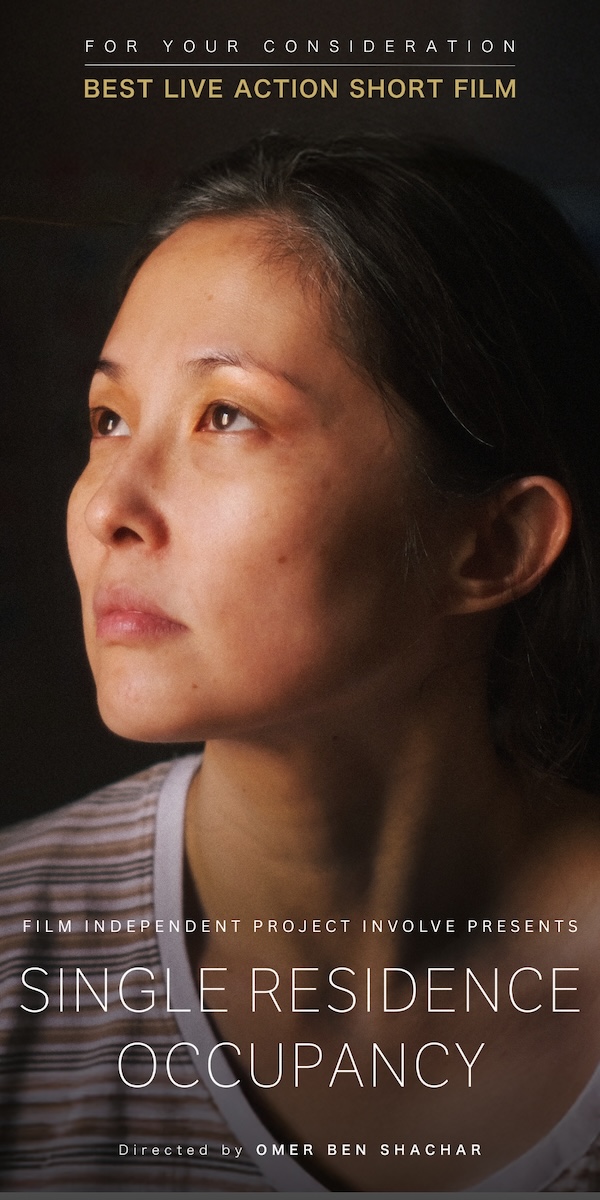Horror Newcomer Elle Callahan on Surviving ‘Head Count’ Out in the Desert
Even the most outdoors-averse city mouse likely has—at one point or another— spent some time on vacation huddled around a campfire telling ghost stories with a flashlight aimed eerily up underneath their chin. There’s a reason, after all, why the isolation of a remote campground (or cabin rental) lends itself so well to spinning tall tales of the paranormal and the macabre. It’s the innate sense of being overwhelmed by one’s surroundings, of feeling small and vulnerable and being so very far away from help, in the event of extreme circumstances.
It’s this sort of remote desert setting—Joshua Tree, to be exact—that very effectively serves as the setting of director Elle Callahan’s debut horror feature Head Count, which premiered in the Nightfall section of the LA Film Festival last year, now playing in theaters and available on SVOD. Inspired in part by recent horror hits including It Follows and The Witch, the film follows a large group of young friends on an ill-fated holiday into the California desert, during which they seemingly summon an ancient evil called the “Hisji.”
We recently spoke to Callahan—previously an accomplished sound designer and sound editor—about making her first feature, the current state of prestige horror, building a career in genre cinema, crafting scares and much, much more.
ELLE CALLAHAN

As someone drawn to genre filmmaking, what made you want to make a horror movie as your first feature?
Callahan: Well, I love folklore and I’ve always been interested in ghost stories. Also, I got my start in sound design, and sound design plays a huge role in horror in terms of setting the tone and building the scares. So for me, for my first film, I felt so much more in control being a director moving into a world [that] I did have control over, with the sound—so that contributed to it.
It’s interesting you say that. I do think that more than any other genre, sound is so important to horror movies. It’s a great tool for manipulating audiences’ emotions and building tension.
Callahan: I went into [the film] knowing I wanted to create a tone and atmosphere of unease. The score was a big part of that, and also creating a [sonic] palette for the monster—giving it a very specific sound and having it have an auditory signature that you could track through the film, like little clicks and insect noises. I went into the movie knowing that I wanted to do that.
What other kinds of non-genre films did you draw inspiration from?
Callahan: Good question… I don’t know if I have an answer to that. I didn’t really pull much. All of my inspiration was, like, The Thing and It Follows and The Witch. But I like a lot of family dramas. Having a love for that kind of family dynamic and prioritizing that in terms of character development played a lot into the ending of the film especially. Horror movies aren’t scary unless you care about the characters. So pulling from films with those dynamics helped.

We’ve been in an indie horror boom for a while now. What were your feelings as a young filmmaker watching this scene develop, and now making your entry into becoming a part of it?
Callahan: It’s been really exciting. Any first time director, your first film is going to come with a lot of restrictions, whether it’s budget or whatever. You know you’ve got to prove yourself, and [in horror] what can sell are the scares. You don’t necessarily need big name talent to make a successful horror film—you just have to have the vibe and you have to have those scares. So that was really exciting, that everyone is more accepting of this new renaissance of horror films. It gives you more room to play and hopefully have your first film work out and get you your next film, and the one after that. I’ve been really excited that people are looking for and enjoying new types of horror.
What sort of challenges did you encounter filming on location?
Callahan: Just housing people is a big thing. The DP, the AD team, production design team and me, we all lived in the house we were filming at. So we were all living on a hot set for three weeks, which actually helped because we were always in the mindset of shooting the film and being in that world. But it was also a little exhausting, constantly being like: “Can I use this cup for water, or is this a prop?” [laughs] But I think at the end of the day it all worked out. For a low budget film you really need to be passionate, and that forced us to be passionate all the time because we could never really escape the film that we were in.
If you had to describe it in just a sentence or two, what’s your approach to working with actors?
Callahan: I try to make it as real as possible. This film is about a group of friends in the desert, so instead of putting [the actors] up in a hotel we rented a bunch of Airbnbs to stay out there together. They were pretty much in the same situation as the characters in the movie. We let them stay over the weekends if they wanted, so it allowed them to fully get in the mindset and get into their characters. I like location shoots, too. It’s kind of creepy out there. I think they were very much within the characters’ mindset throughout the whole shoot.

What attracted you to Joshua Tree and the desert as the appropriate setting for this story?
Callahan: Well, I’m from New England originally. Until I was in my early 20s, I’d never really been out to the desert before. A year prior to the film’s shooting, I went out to Joshua Tree with a group of friends for a weekend. And I was like, “this is the most bizarre-looking place to me.” I’d never seen these plants, the Joshua Trees. I thought they were just so alien looking. I hadn’t seen them represented in film at all, and I thought it would be a very strange and unique place to set a film. It was also a very eerie night. Out there it’s just nothing, and you’re just so aware that you’re so far away from anything, like any kind of help.
Lastly, I’d love to hear about anything else you might be working on.
Callahan: I’m actually directing another feature right now! This is one of my days off, so I’m actually going back to set tomorrow super-early. I’m working on another genre film called Witch Hunt, which also takes place in the desert. It has to do with a world where witchcraft is illegal, in an alternate reality to our own that feels very similar to the one we live in now, just with witches.
Is that an original idea?
Callahan: On Head Count, I worked on the story and Michael Nader wrote it. But this new one I’m shooting now I wrote all myself, so it’s the first script I’ve written alone. So it’s been a great experience so far. There is some homage to Head Count, so people should definitely be on the lookout for Easter eggs!
To see when and where Head Count is playing near you, click here. Not a Member of Film Independent yet? Become one today.

